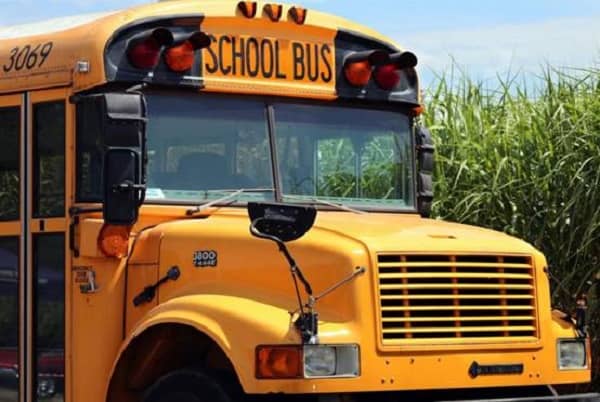Some of the strongest memories a person has of their childhood are of the school buses they rode in. For a lot of kids and teenagers, buses are the only way they could get to school in the morning and come home later that day. Little do these students know that there are actually a lot of different types of buses available for schools to utilize.
School transportation needs to be efficient, cost-effective, comfortable, and safe for its students. The best buses depend on the job required.
Here are just a few of the different types of transportation that a school can provide for its students.
Type A
The Type A school bus is the smallest option available. It looks exactly like any other school bus, except it’s designed to carry only a little more than ten people.
This type of bus is further split up into two groups: Type A-1 and Type A-2.
Type A-1 buses have a Gross Vehicle Weight Rating (GVWR) of 10,000 pounds or less. Type A-2 buses instead have a GVWR of over 10,000 pounds.
You’ll typically see these buses used on routes that are much shorter or for specific types of students. For example, students with disabilities or in the ESE program may qualify for access to a Type A bus.
Type B
While a Type A school bus is constructed on a cutaway front-section vehicle, a Type B bus body is installed on a front-section vehicle chassis. As a result, a Type B school bus looks more like a traditional school bus, albeit smaller.
It’s designed for carrying more than ten people, and it has a GVWR of more than 10,000 pounds. A portion of the engine is near to the driver’s seat, behind the windshield.
This type of bus is rare to see these days, but they still meet all the Federal Motor Vehicle Safety Standards. They’re also perfectly suited for use by the school district.
Type C
A Type C bus is the one most often thought of when a person imagines a school bus. It’s commonly used in school districts due to its higher capacity and larger size.
These types of buses come with a GVWR of over 23,000 pounds and can carry as many as 80 passengers. A defining factor in a Type C bus is that the entire engine is in front of the windshield.
You’ll see them gathering up groups of students for school from all over the city. They’ve become much more common over the years as the number of students attending school has grown.
Type D
Type D school buses are the largest variety. They most closely resemble a public transit bus due to the flat front and large size. The engine is mounted either in the front, middle, or rear of the vehicle.
The GVWR is over 25,000 pounds, and it can accommodate up to 90 passengers.
Most commonly, you will find inner-city schools and more populated areas utilizing Type D school buses to help transport their larger student population.
As opposed to the other types of school buses, the front door is located in front of the front wheels rather than behind them.
Multifunction School Activity Buses
In some cases, a school curriculum includes off-campus visits, such as to a museum or an event. One option for transportation is the traditional school bus. There are also multifunction school buses that can be used.
These school buses are prohibited from being used in transporting students to and from home since they aren’t painted yellow. However, they are exempt from traffic control requirements and devices, and they comply with all other school bus safety standards.
One reason to use these types of buses is to distinguish their purpose from a traditional one. They’re also often smaller than ordinary school buses and have a different interior layout.
Also read: Production Scheduling Mistakes That Everyone Should Avoid
Charter Bus
While a multifunction school activity bus is a good investment in the long term, they’re not that much more comfortable than a traditional school bus. If you’re planning a longer trip and you want your students to ride in comfort and style, a charter bus is what you want.
You can rent out a charter bus either for a few hours or for a full day. They come with a driver specifically hired to drive them, and it’s a short-term investment.
There are multiple advantages to utilizing a charter bus, even for shorter rides.
The interior seats are made much more comfortable for riders. Some of them come with televisions installed either in the headrests or mounted on the ceiling. A vast majority of them also have WiFi, which students will make good use of.
Connect ED School Buses
ConnectED school buses take the traditional formula and improve it. These buses provide increased safety and security as well as improve your operational efficiencies.
An automatic vehicle location system streams location data every five seconds. Push-To-Talk (PTT) communication ensures a quick exchange of information between dispatchers, drivers, and everyone in between.
These buses also boast the best system for bus WiFi by turning the vehicle into a mobile hotspot. All of the ConnectEd systems work off of it to help keep your school system connected with its buses every step of its journey.
Funding is available to add ConnectEd buses to your fleet through ESSER grants. These buses can prove a worthwhile investment as students can stay connected to the internet wherever their bus takes them.
Improved Buses for Smart Students
All school buses serve the same function for their school districts. They’re essential for transporting students to and from their destinations safely, without putting them at risk.
Some school buses can go above and beyond those expectations by providing comfort, style, and an internet connection. However, they’re also a much more significant investment for your school.
If you’re interested in learning more about tech and finance topics, check out our other articles.

